On the 14th of April in Peloponnese, Greece (https://goo.gl/maps/zhZ5rasgFq9ZeZuz5) the first Hellenic Ironman 70.3 was conducted in a mesmerizing and memorable location which is exactly what the doctor ordered for such an event.
Now just to be clear for those of you reading this post, I am far away from becoming an IronMan guru, as my track record consists of one (1) full IronMan in Taiwan and two (2) 70.3s and furthermore, I only started my triathlon career around 13 months ago. I mention the previous historical facts, not in order to brag, but to emphasize that the below write-up is based on my limited experience, the comments I heard from other more seasoned triathletes and from what I have seen/read in the past 13 months.
The description of Greece IM 70.3 will be broken down into the organization of the event, the race course and a description of it.
The Event / Organization The location was at Costa Navarino in Pylos – Pelopnnesos, at a wonderful location next to the turquoise Ionio Pelagos sea. The area is ubiquitous with splendid gnarled olive trees and in general is full of nature all around. The scenery without doubt is majestic, and so was the IronMan course as we will discuss further down the line.

The Costa Navarino resort is about 3:00-3:30 hours drive from Athens, mostly over newly paved toll roads and highways with a small portion over country roads once you reach closer to your destination. It is relatively safe: you just have to slow down as the one lane highway and traffic could make you go slower.

Note: There are a lot of toll stations along the way, so bring change with you. I don’t remember the exact count, but my guestimation is around 5-7 of them (including Attiki Odos), and the toll price ranged from 1euro to 2,80 euros.
The organizers had provided you with the option of being able to stay in the resort (at a not so cheap price), but also outside the resort as well. You also had the option as always to search on sites such as booking.com or AirBnB to find some better and more affordable prices that fit within your budget.
The organizers “EYZYN” up to the day of the event, provided the athletes with a number of informative details and updates to keep the excitement high, but also the stress levels low (the more details we get about the event the less things we have to think about). Once you arrived within the resort you were welcomed by the IM staff and once you had shown them the right access papers (see below), they allowed you to enter the resort and check-in (these details were provided via email),. Also, passes were provided for your guests to easily gain access within the resort, even if they lived outside of it. Furthermore, shuttle busses were available to transfer guests/participants from the parking area to the location of the main event (sometimes a small wait was necessary depending on the number of people waiting to be transferred).
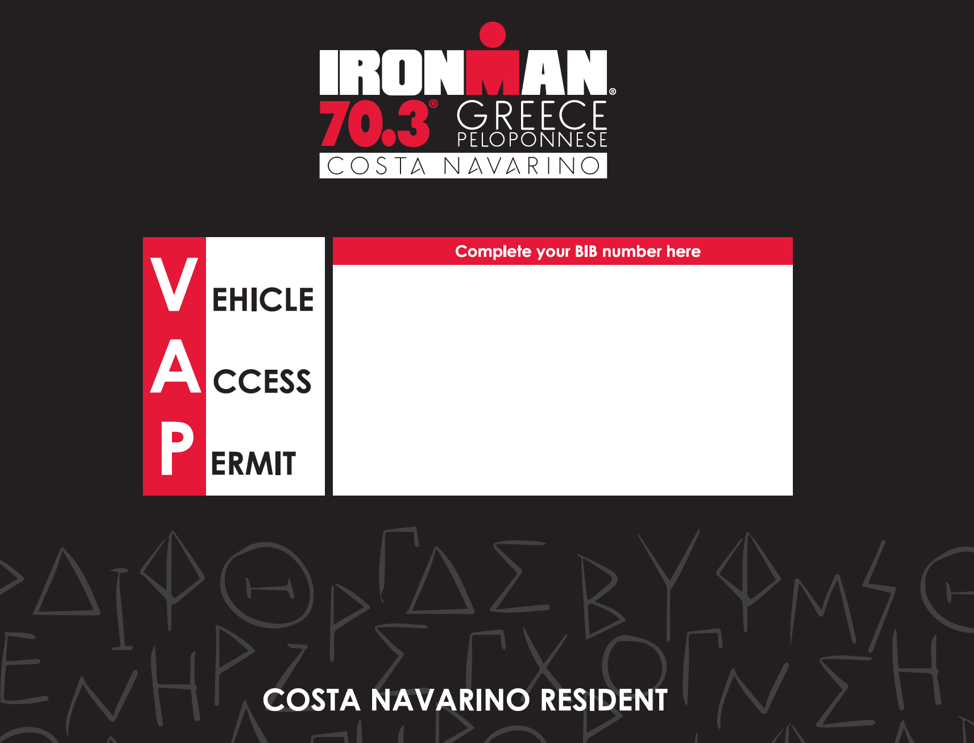
On the day we arrived, the organizers had the traditional welcoming “Pasta Party” which was a bit different then the classic buffet that most of the ones have had. The existing pasta party had a more relaxed atmosphere to it where most of the people were either sitting on the ground eating, or gathered around standing tables while listening to the organizers talk about the IronMan event that would be conducted. The food was abundant and tasty, and for drinks they provided a number of local and non-alcoholic beverages (some pictures below of the Pasta Party).
The Ironman village was located within the Costa Navarino resort. There were many shops, restaurants and activities which made the mood very vibrant. The organizers also introduced a nice traditional flare by incorporating a number of Greek dancing competitions for the spectators to watch, which even for me who is a Greek, I have to admit that it was very interesting and fun as well.
I won’t talk about the bike check-in as I found it well organized and completely in line with the other bike check-ins that I have attended in the past, thus I believe that they where aligned within the IM standards.
The race briefings where conducted in both languages (Greek & English), but I found them a bit more fun then the classic borings ones that I usually attend, as there were two presenters and made it a bit more interactive and fun for the audience to watch and, of course, pay attention to. For example, when describing the fact that this is a no drafting race and they wanted to depict the allowed distance between the two bikes, they actually started moving apart by counting the distance for the competitors to visually understand the distance.
Below you will find a very nice top view shot of the venue which shows the beauty of the location as well.
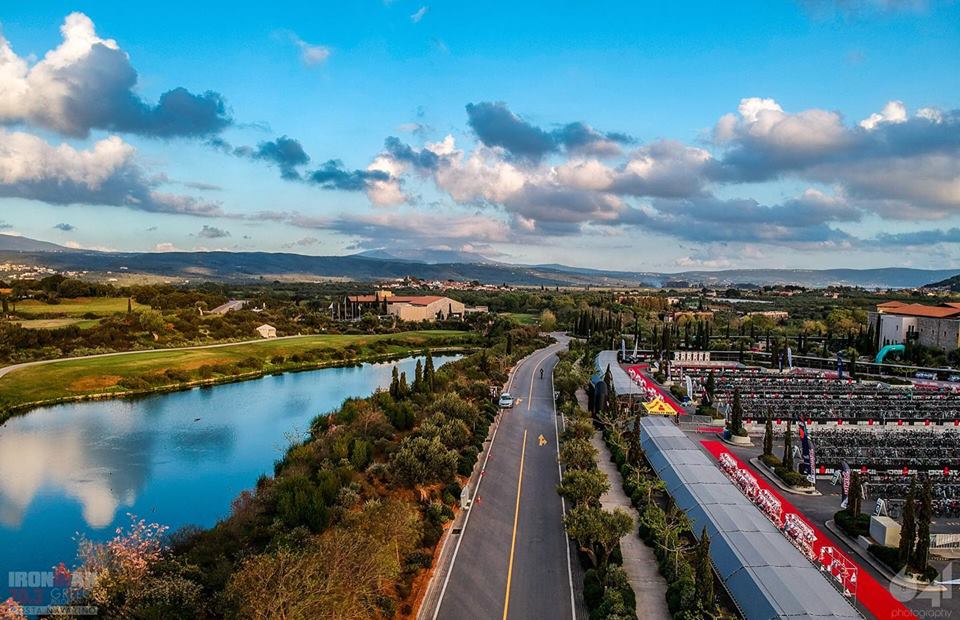
The Race & the Course
In the days leading up to the race, there was a lot of uncertainty around the weather that would welcome us on our special day as the forecast was showing rains and windy weather; so as Greeks often do, we had some serious discussions with Aiolos and Poseidon to see if they could be on one of their happier days (they tried, but only after our swim – will get there).
From the details that were given during the race briefings, around 1470 competitors were to start, and around half of them would be of Greek Nationality (704), followed by Americans, Australians and English (again my stats may not be that accurate).
Come race day, we woke up to a cloudy sky. We proceeded down to the sea where we would start our day. The weather was gloomy, and as soon as our feet touched the sand it started to rain, a light sprinkle I would say, and Poseidon decided that today he wanted to be a big naughty so started dancing and raising some waves, just to put a bit more “Iron” in the word “Man”. You could see the faces of a lot of contestants when they saw the waves forming, and it was especially “fun” (read extremely challenging) when they tried to enter the sea and got slapped by the waves, and returned to the beach shoreline – something like – “umm don’t think so, not in the mood”.
I am not bragging here, but I am a windsurfer, so I am used to rough seas, and I don’t find them intimidating nor scary, but seeing it from the eyes of others, just the scare factor of entering the water in those conditions stressed the body up, and made you exert more power, and drained the energy of a lot of competitors which resulted in a lot of people finding the swim very difficult.
The Swim
The swim was with its challenges:, large waves that you had to swim over to be able to proceed into the sea, difficulty spotting due to waves either taking you to the top or the bottom of them, thus the timing factor of when to spot and ensure that your direction was correct, had to be spot on, but trust me it never was. There were times when I stopped and did a bit of breast stroke in order to get my bearings and ensure that I was heading in the right direction.
The sea temperature was just right, at around 16C and I used a long sleeve wetsuit (no neoprene hoodie for me, but others did use it). I thought that the temperature was just right, but others felt it was a bit more cold then they wanted it to be.
The swim course was one loop, which meant you had to spot pretty good, so you wouldn’t miss the turns, and you had to drink a large amount of sea water because of the rough seas, and the constant large waves that were forming but honestly, I did enjoy the swim – I tried bilateral breathing, one sided breathing just to try to find that sweet spot of not drinking any water, but failed, so I just tried to minimize the intake.
There was a bit of difficulty for the people exiting the waters, as a lot of people got sucked back in and fell on the sand making it difficult to find your balance and were dragged this way and that by the currents, but if you timed your exit just right, and ran before the waves started sucking you in, you were able to have a clean exit – it was all about the timing and, of course, a bit of luck.
Even if people had done their trainings (out of the pool) within the ocean, I believe very few people could have prepared for such conditions. There were rumors heard that they should have cancelled the swim (I’m glad they didn’t) but again I am not an event organizer so I can’t comment on what should or shouldn’t have happened.
A significant note here is that throughout the swim, there were multiple life guards swimming, or on their Kayaks, SUPs and even the coast guard was present, and the life guards helped with your exit out of the water to ensure the safety of everyone, so help was there in case you needed it.
Also, supposedly, the swim was cut by around 200M. For this cut I have heard two versions (but have not verified them), version (a) it was cut shorter for safety reasons so people could get out sooner and in a safer location and version (b) the buoys shifted because of the bad weather.
After you safely got out of the water, you had a 1KM walk/crawl/run up to T1, which for me was the biggest transition I have ever done, but the nice thing is that it was through the IM village, thus spectators were there cheering you on. The negative side to it, it was a long run and the incline within the village didn’t help. Also note that the run was over a red carpet which made it easy on the feet.

A fun fact: the beginning of the swim was done by the speakers playing the song “Zorbas the Greek” (Sirtaki style), which kept on increasing in speed as the time went by. This added to the excitement of entering the angry sea. Some pictures from the swim are below together with the link to the video of the rolling start
The beginning of the swim was done in a rolling start manner, where they allowed 4-5 competitors every ~5 seconds to proceed into the water, and the groups were divided according to their pace and how long it will take to finish the 1900m – I always like to sit in the 35:00 – 40:00 minute groups as people tend to be less pushy and competitive when starting but also I’m not at the end so I won’t feel that I’m the last one out of the water.
The first link here is a compilation by swimbikerun.gr @ https://vimeo.com/330963971 which has a nice shot from a drone of people starting their swim and a pretty good picture of the conditions as well.
The official swim course can also be seen here below as it was originally planned (as mentioned above, it was around 1700M compared to 1900M).
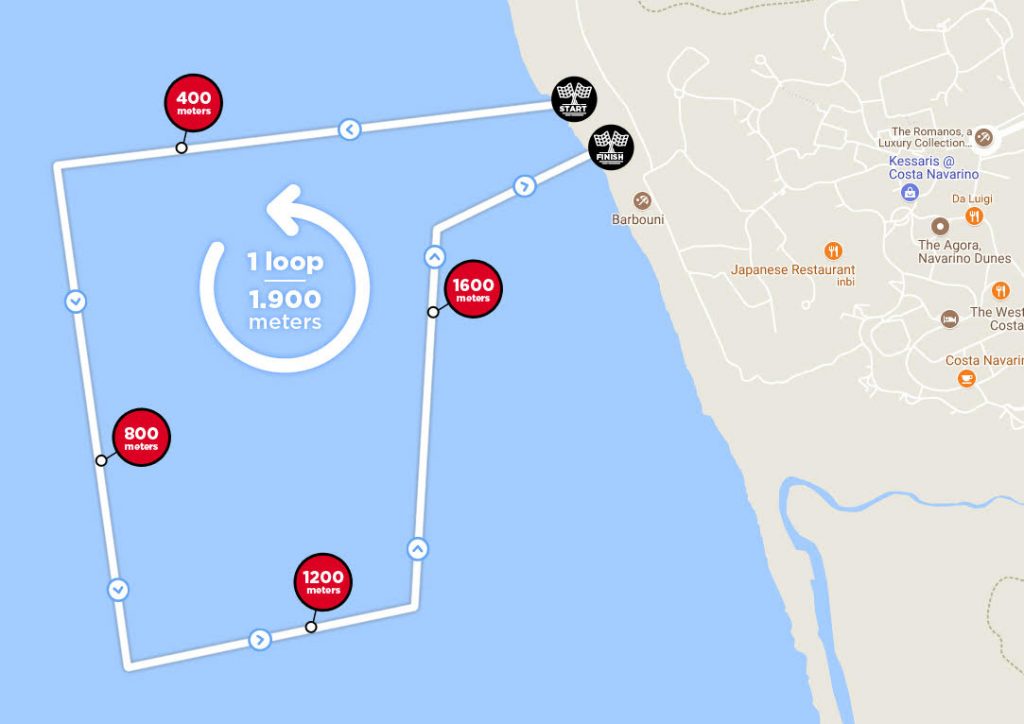
Please also find some other nice shots from that day, that showcase a bit better the conditions of the course during that day.
The Bike
The bike ride was an interesting one and probably one of the most challenging ones I have ever done due to the prolonged rolling hills and the hill grade that at specific points reached up to 9%, which if you hadn’t trained for them, it would have been a painful one, and a challenging one.
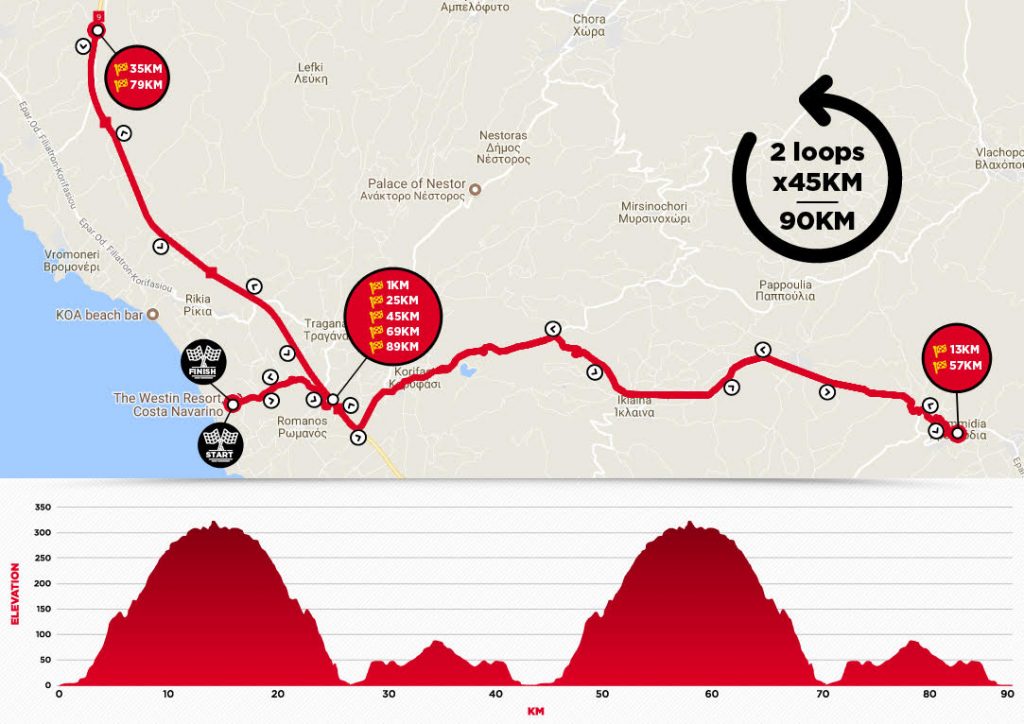
After you wrapped up with your T1 (which was relatively a long one due to the distance from the swim to T1), you grabbed your bike and headed out to the bike course by cycling out of the Costa Navarino resort and into the town. As soon as you entered the bike course, after around 1 or 2 KM you were welcomed by some nice hills for around 15KM which whose grade ranged from 0%-9% incline (according to Garmin). The way I could describe the bike race is that it had prolonged rolling hills – my strategy was pace myself on the hill climbs which resulted in me going from 10-15 km/h but push it really hard on the decline to make up for the loss of speed. While a road bike may have given you a better advantage on the climb due to the fact that it may have had more gears, a TT bike gave me a better advantage on the decline as I was able to become more aerodynamic and gain more speed. Top speeds for me were around 65km/h on the decline; the road was paved and I didn’t find it dangerous nor were there any sharp turns to make me feel uncomfortable. On very few occasions, I would say you were mixed with a large group of cyclists where the decline was a bit more challenging in trying to avoid people, but a bit of extra power easily helped me break away from that group and return to safety.
By the time we had reached the bike course, the weather had warmed up, and it was just right for a short or sleeveless trip-suit; and trust me once you reached those hills, it didn’t matter if the weather was below zero, your body temperature spiked up, and the only thing you wanted was water.
This was one of the nicest rides that I have ever done in terms of scenery, as at some point once you have completed the first half of the first loop on your way back after climbing one of the big hills, the first thing that your eyes saw was the ocean and my eyes opened up in awe – at that point I was cycling alongside a friend of mine and I remember him saying “why did you stop peddling!” – As much as I push yourself during the IM races, I love to soak in the scenery around me; this is one of the main reasons why I pick my destinations, for the beauty of the course.
The course was amazing as you rode alongside either the coast, mountains or majestic aged olive trees. You can see the route, the elevation here from my strava ride – https://www.strava.com/activities/2289428623
This was a race where you had to pace yourself; it would have been a bit irresponsible on my part to push all out either on the first loop or even the second knowing that a 21KM run would be coming up. Going into the second loop my energy levels had descreased considerably, and even though I still enjoyed the ride and had good power in my legs to push through, I definitely wanted the ride to end. Nice thing is that the last 15KM of the route were down-hill with a 0% to negative incline; thus it made it easy to increase your speed, but also start relaxing those quads in preparation for the run.
Tip: If I had to give one piece of advise to anyone training for the 70.3 Greece IM, it would be to do a bit of simulation training and do hill rides and off the bike runs as well. It will help you immensely during the race.
Aid stations and re-fuel stations were spot on distance wise. I always use my own electrolytes so I only stopped 1-2 times to pick up an extra bottle of water, but from what I saw all stations were fully equipped and the volunteers even though they were mostly newbies and didn’t have any experience were very helpful and good at handing you what they offered. I always follow the rule of thumb because I don’t know the level of the volunteers and to make sure they spot me, I point at them to show that I’m going for their offer. One last comment that I have to make about the bike course is that during the downhills we had a bit of headwind which also made it challenging, in other words, you never really relaxed completely and always had some type of challenge to overcome, but hey they don’t call it Ironman for no reason, and if it was easy everyone would do it, right?
The (Dreaded) Run
I’ll start out by saying this, I’m not a runner, I show no true love for running, and I have always had a love-hate relationship with the sport, but nonetheless, it is a very important part. I made that introduction to inform the readers and build an excuse of why I was so slow during the run (there I did it!).
Activity on strava: https://www.strava.com/activities/2289427666
The temperature during the run had increased to an average of 25C, a 5C increase from the bike ride and around a 10C increase from the start of the day, which made things a bit more challenging in terms of keeping the heart rate low and keeping up the pace as well.
The 21KM run took you through a number of villages which gave the run some nice scenery for the eye to see. It had some minor hills which definitely were not very welcome to the quads after the hilly bike ride. In the beginning of the run, due to the extra push I had given during the bike ride, my quads cramped up, but after a bit of walking and stretching them out, they were good to go (kept on hydrating as well to ensure the cramps wouldn’t come back).
One of the interesting parts during the run was that for a large number of KM we ran on a dirt road within the Gialova lagoon (Voidokoilia), which was amazing scenery wise, but not very pleasant on the feet, it didn’t provide any difficulty during the run, but if you hadn’t trained in such conditions, it may have impacted your pace just due to the unfamiliarity.
The refuel stations were positioned at a good distance apart from each other and had adequate liquids and food as well, and something that I had seen in the Dubai 70.3, sponges were provided that had been dipped in cold water, which were a gift from above once the temperature increased..
The last few KMs at the end of the race held a small surprise for you which was a nice little hill which made you curse and kinda say, “will these hills never finish”!
The course had good indications and didn’t confuse you in what direction you should go, plus the fact that it was one big loop as well. The course was laid out in a good manner.
The only negative aspect of the course, I would say, were the minor hills throughout the run, which weren’t that inconvenient but after the bike course didn’t always agree with my quads. The part of the course which went through the lagoon while beautiful and while it provided a bit of a nice breeze wasn’t paved, which could spoil your concentration a bit. The below image is where we ran through the Gialova Lagoon, and you can see the non-paved part.
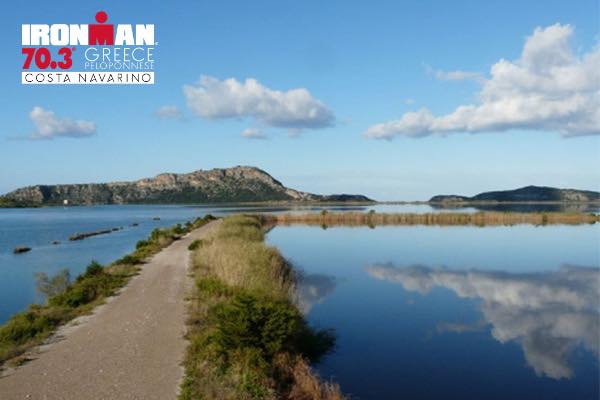
As you can see from the picture below, the run was through the small villages of the area which provided a pleasant change of scenery.
The Crowd and the Volunteers
Big big thumbs up to the volunteers who honestly out of all the races that I have competed in, the energy levels and the support they provided to the people that were racing was the most amazing.
I remember at around the 7th KM on my way to the 9th KM which was where one of the refuel stations existed I could hear the volunteers shouting and encouraging the competitors to keep on going (from almost 2KM away).
Their willingness to cheer, help and provide you with your fuel of choice even if this was the first time they were volunteering was done in a very professional way.
You could see that the volunteers were swimming / cycling / running with you…. through you.
Lastly, this was a very big event for the area so outside every house and in every corner even at aid stations in the small villages, you could see the locals shouting in Greek and encouraging you to keep on going, by saying things such as “pame palikari mou” (keep on going son – loosely translated), you even had kids hanging around teasing you and saying “come on, can’t you go any faster!” – One of the funniest things I heard from one of the locals was “hey son you look tired… do you want some tsipouro” (local homemade moonshine), it will make you sprint to the finish line”. Outside every house you had local little old women and men sitting on their chairs and watching, encouraging, clapping and cheering. This is what I loved the most about this IM race, that everyone in the community was involved and supported us.
Doing an Ironman either a 70.3 or a full one is always a challange, and while I am no expert, I believe that it needs a special breed of people who are willing to push themselves through these tough conditions and test their limits. Greece IM 70.3 was one of those courses that you both loved and hated at the exact same time(where you would say I want this to stop and show me more kinda mentality).
Lastly, to answer the question that some people always ask, “Yes I would do the course again, and I will definitely do it again next year!”.


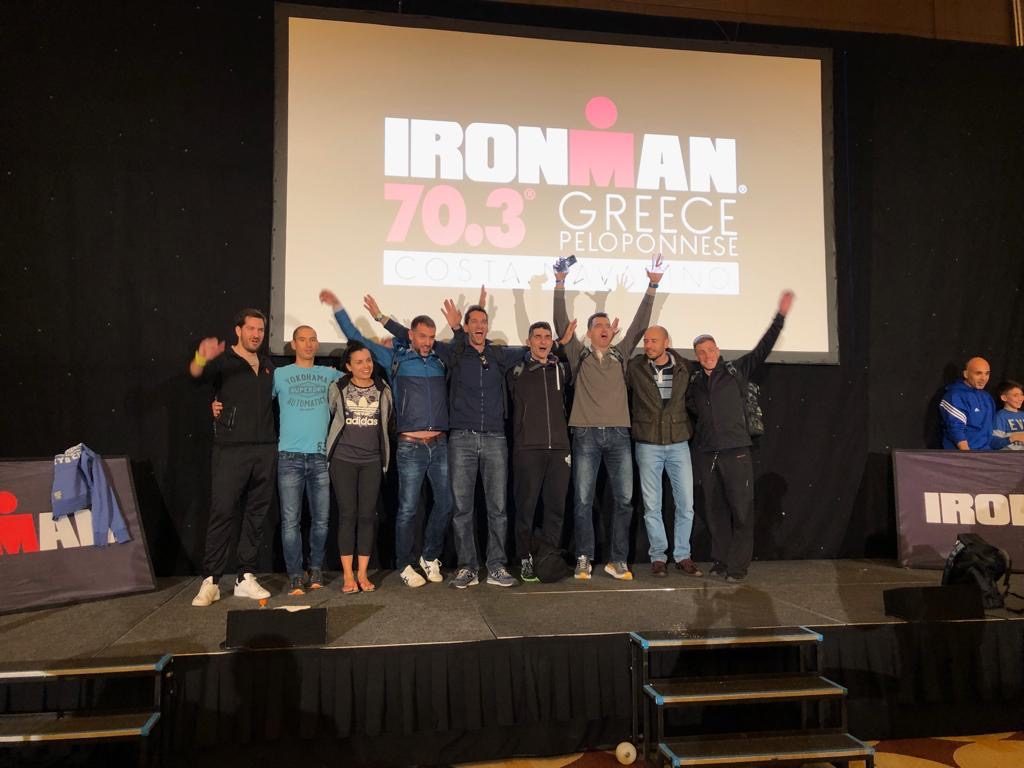

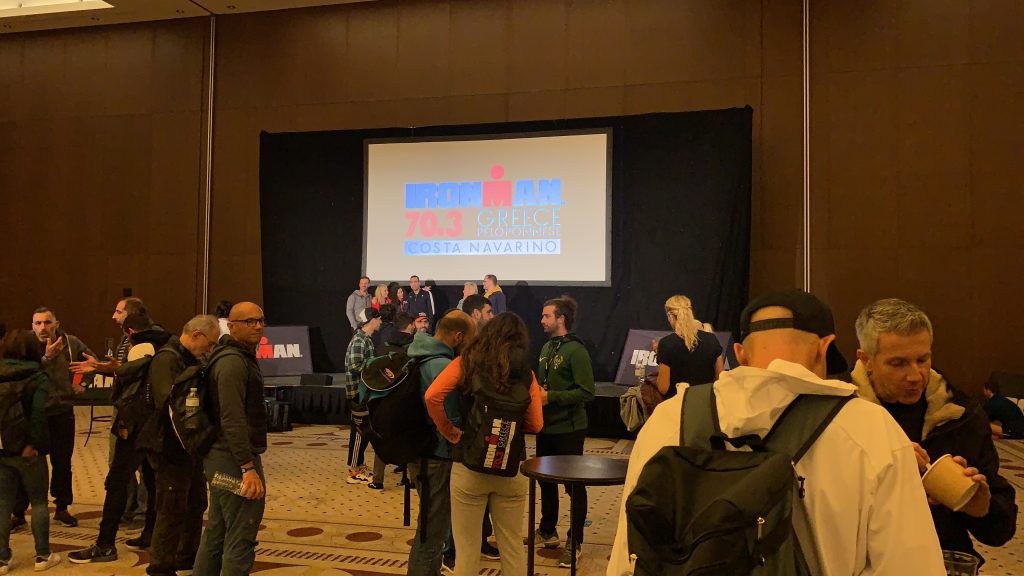

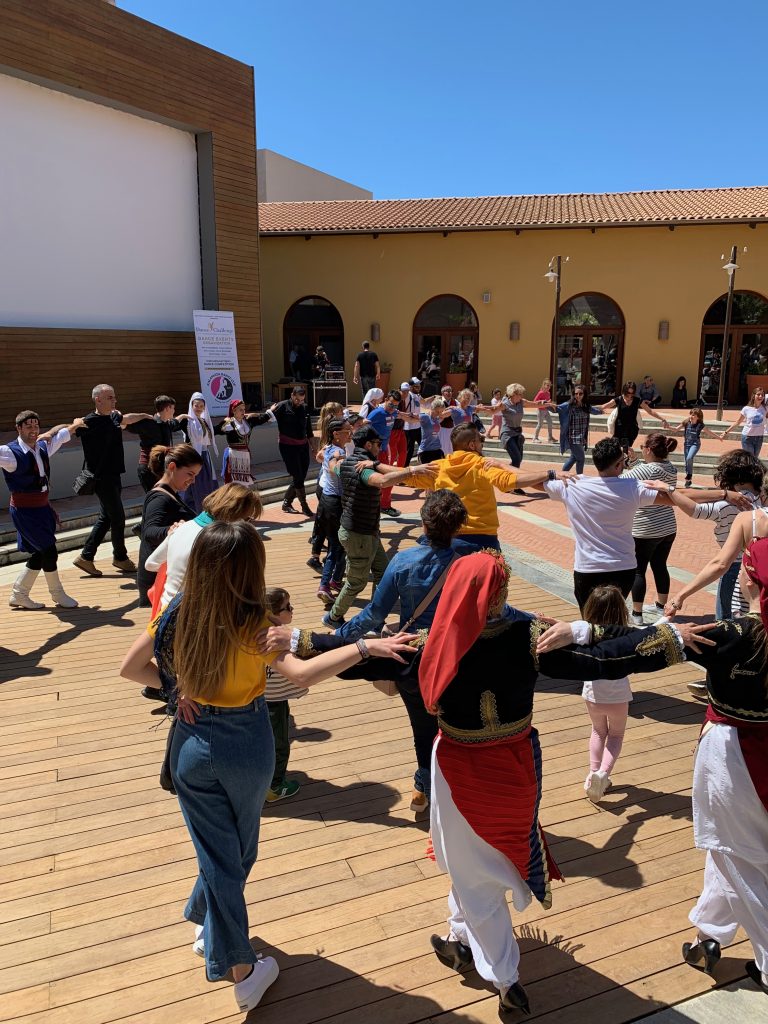

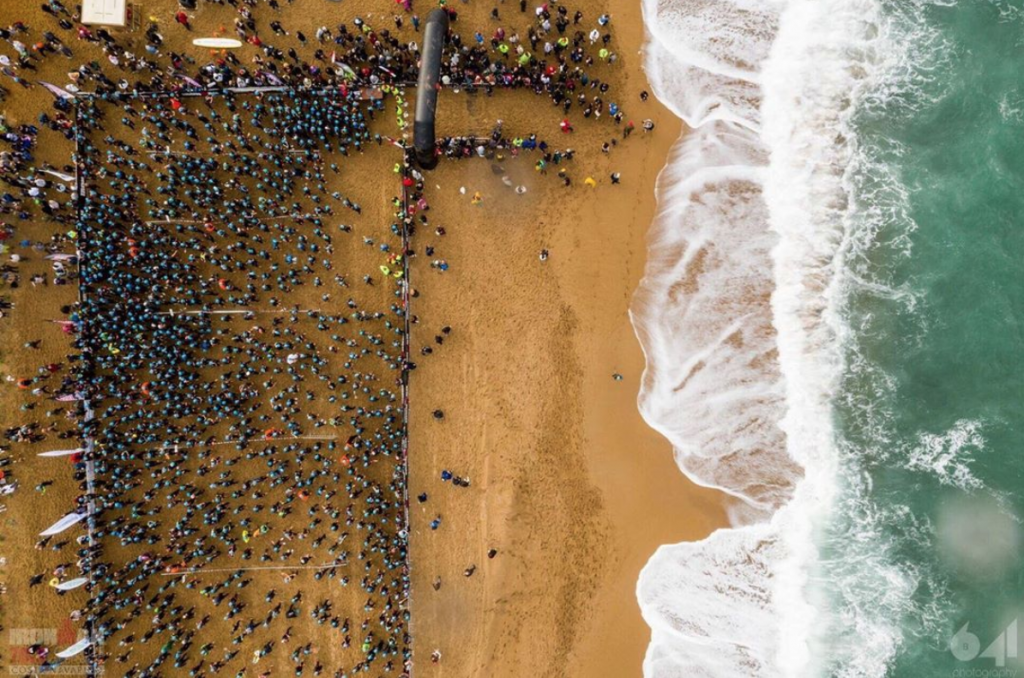
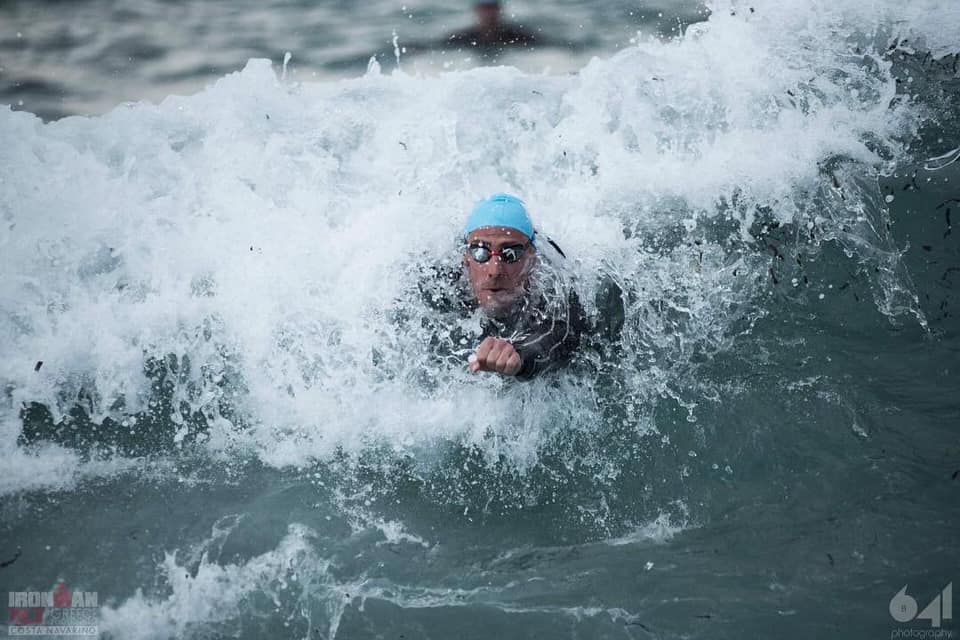

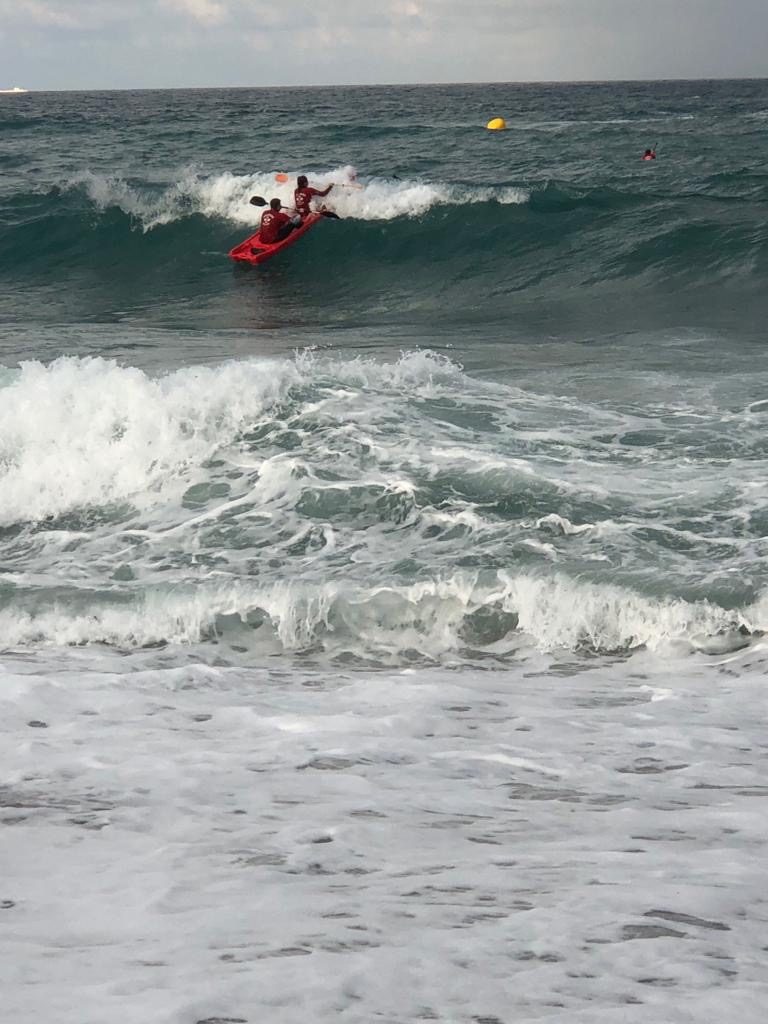
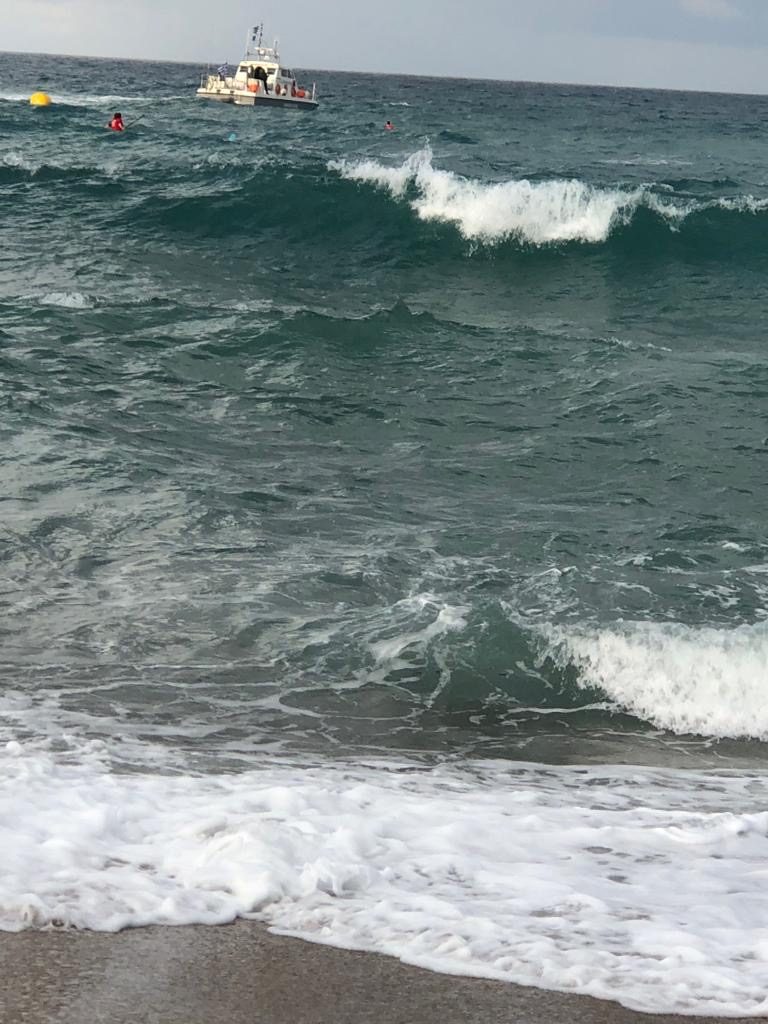
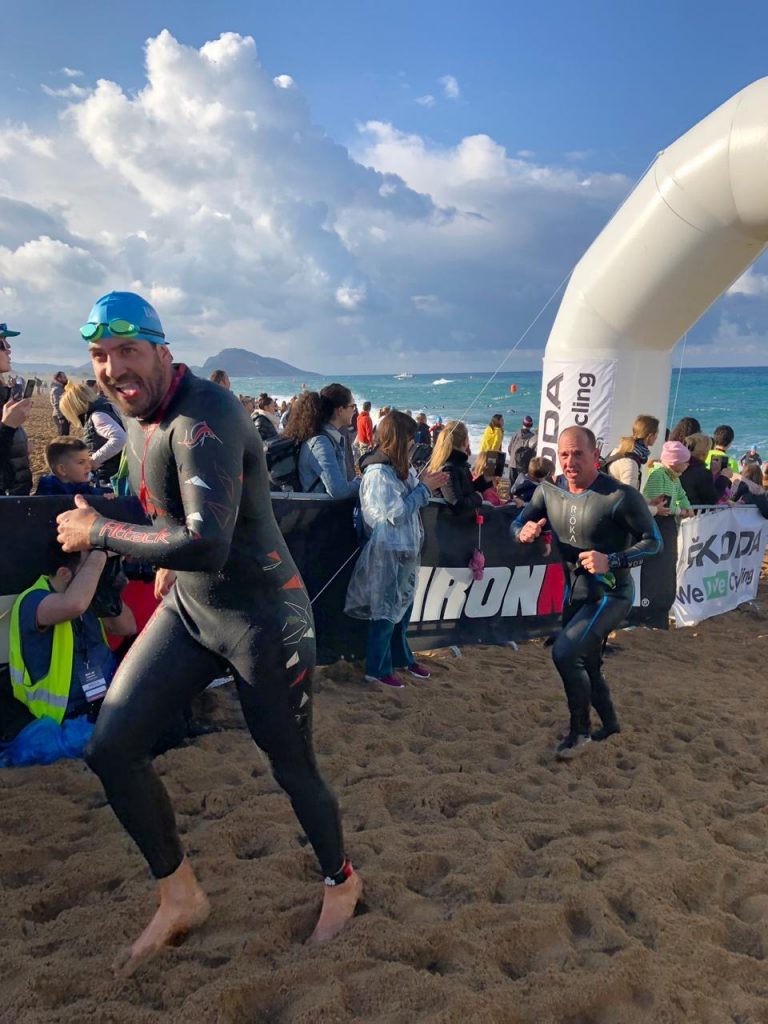
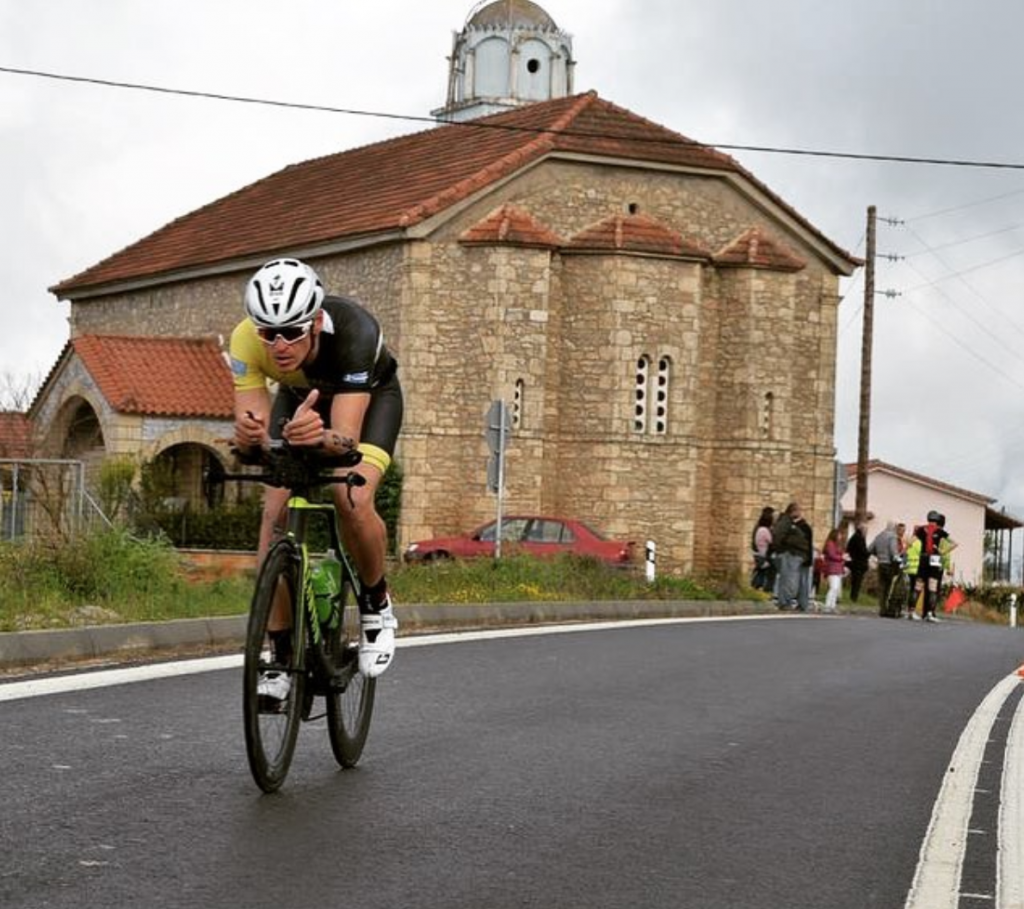

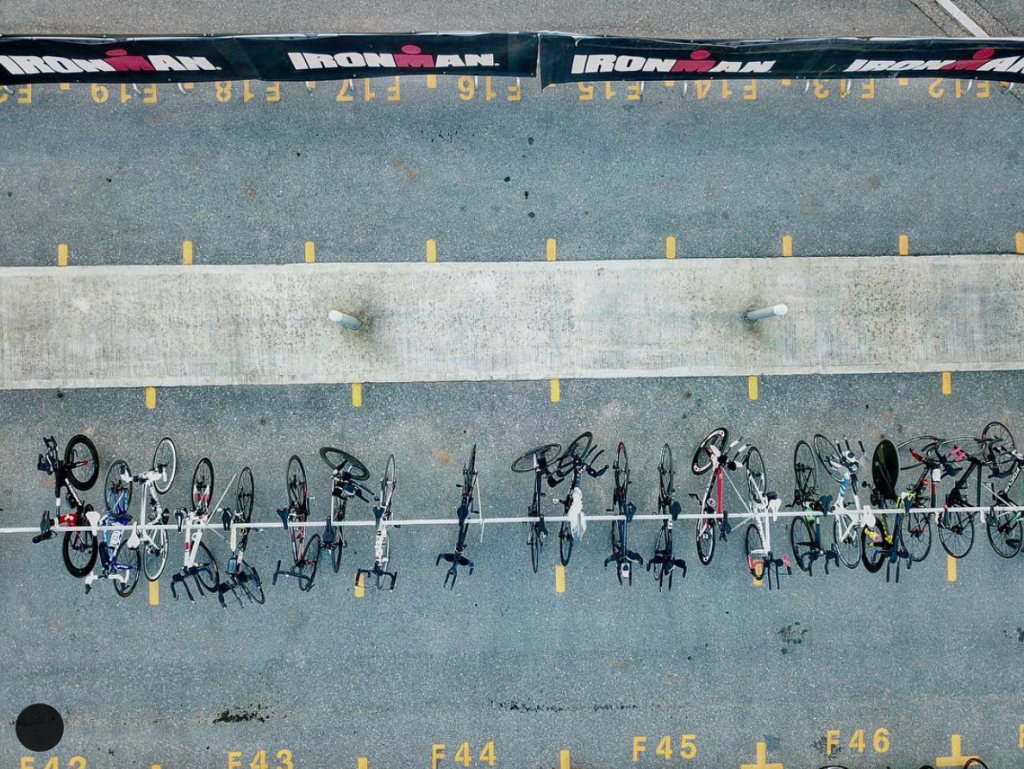

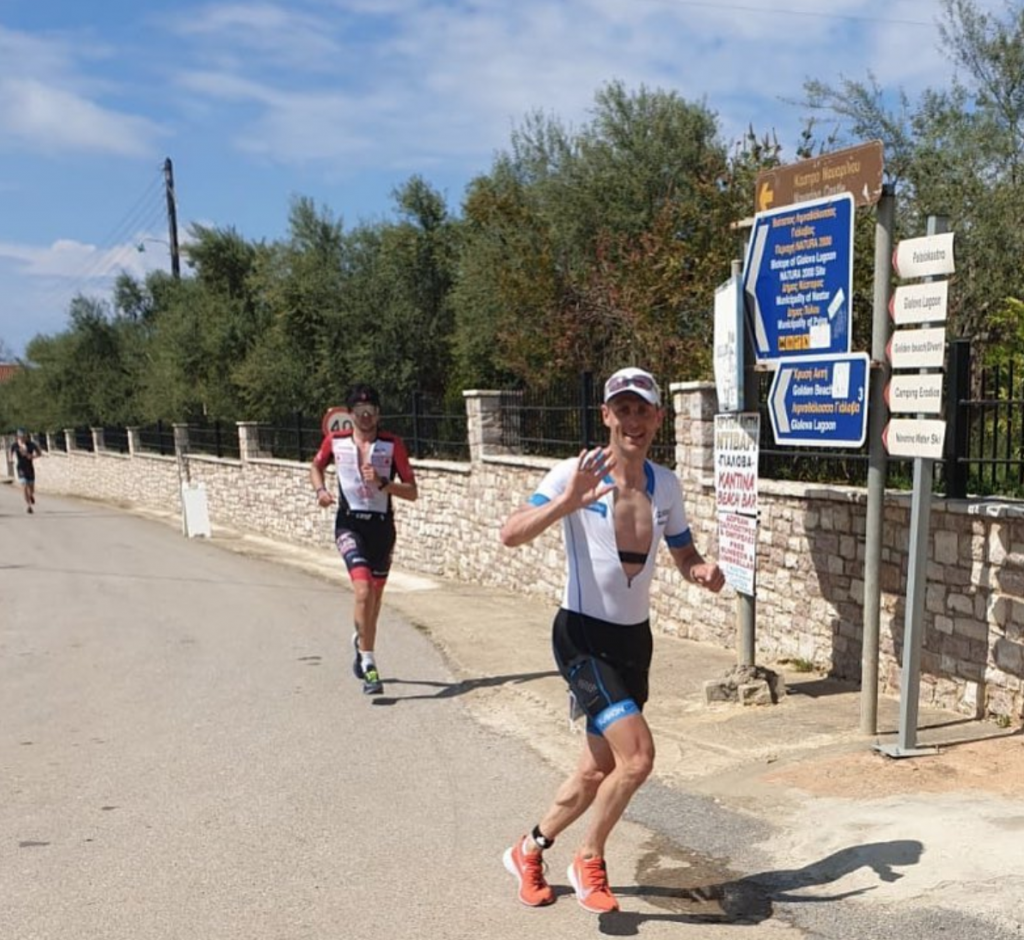
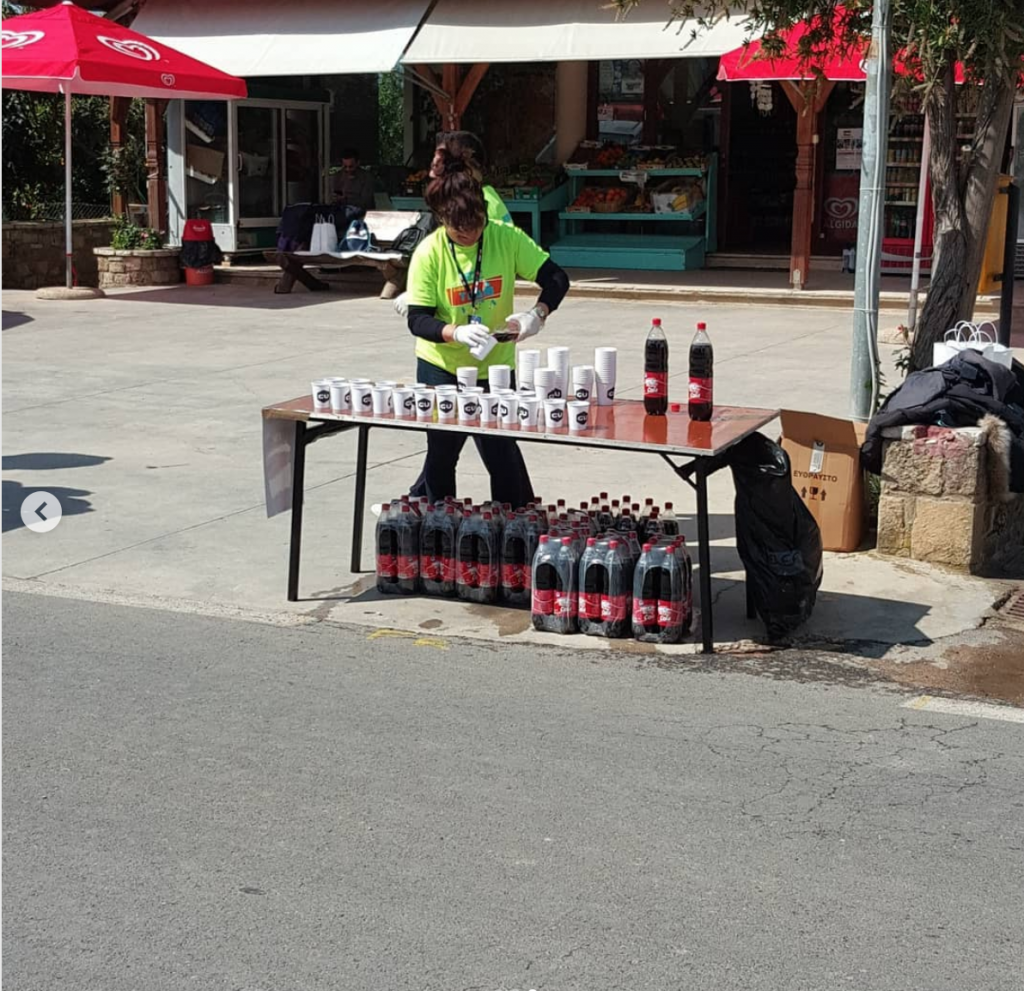

Good stuff Dimitris!
It was, indeed, a hell of a race. Looking forward to the second iteration next year.